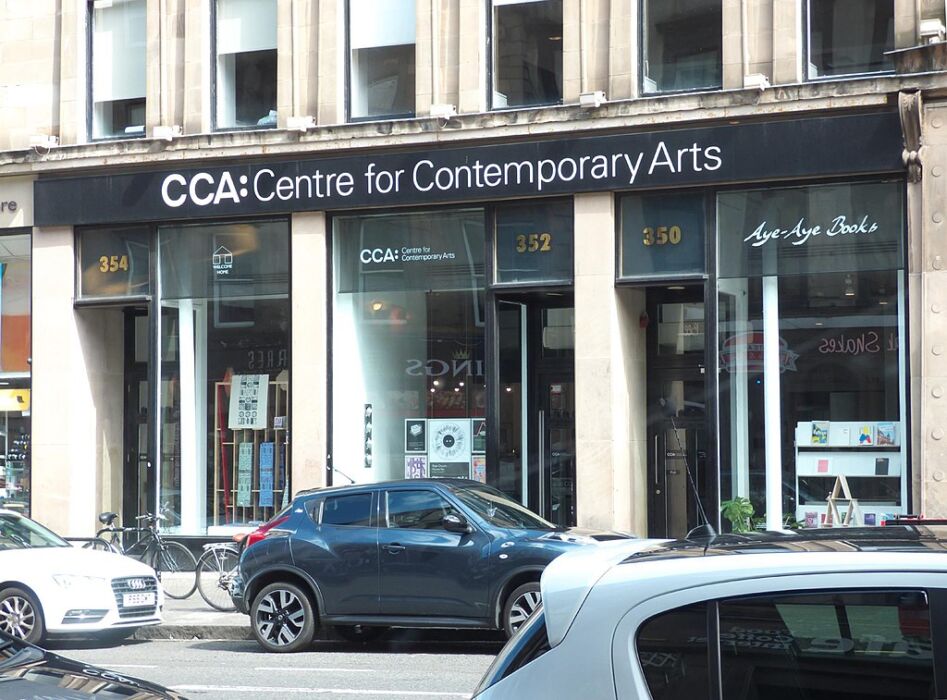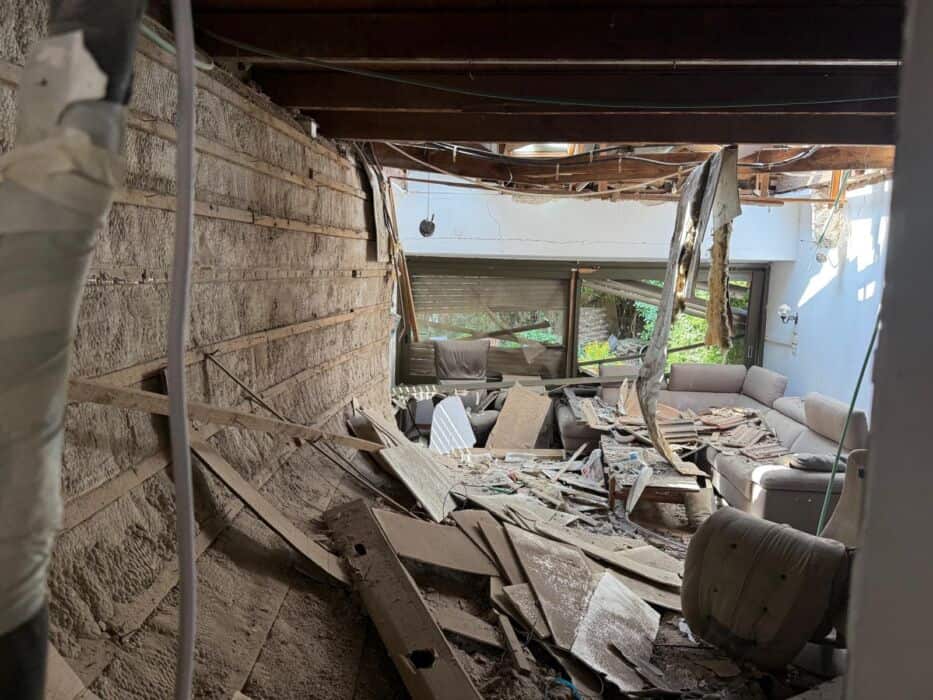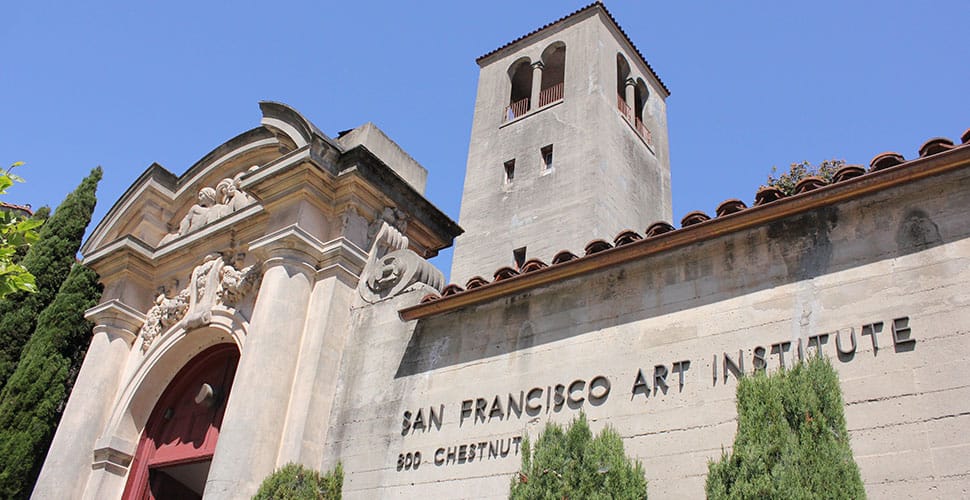In the course of writing this book, I had several talks with Lea Mauas and Diego Rotman about their working approach, the changes it underwent with the years, how they view it in retrospect and how this retrospection affects their current artwork.
In this book we are summing up almost a decade of activity ־ 11 events, 10 journal issues and hundreds of artworks. Can you pinpoint the legacy it all left behind? Where do you see it and what is its most significant impact?
Lea: I don’t know if it’s possible to even talk about it in terms of legacy. I believe it would be more accurate to talk about several phenomena spinning off from this activity.
Diego: When we started out there weren’t any biennales and art festivals like you find today, except for Art Focus, which was held once every four or five years. It was a very difficult time, a sense of emptiness, which led us to create these platforms in order to enable encounters among artists and between them and the public, to assert art as a relevant tool for dealing with the difficult situation in the period of the Second Intifada and even view art as a significant tool of critical reference to the city, its architecture, its legacy, its policies and politics.
When we decided to terminate the Heara events and to stop publishing the journal, there was a time when similar one- or two-day site-specific events began taking place in a similar style. Today you have the Empty House group in Jerusalem, whose organizers include veteran visitors of Heara events ־ perhaps a contemporary example for the change which began occurring at that time, for the tradition established, if you will, with a very beautiful and fascinating twist, but I still see the same Hearat Shulaym spirit, with their own uniqueness, of course.
One of the significant things we started developing and which changed the way we worked in the art field was the use of an open call for artworks.
Lea: This wasn’t common practice in Israel. The very fact that the artist’s academic background or resume played no part in being admitted and included in the project represented an interesting innovation as well as challenge.
What is special about the Heara artwork? Can you elaborate on the various types of pieces?
Diego: The performative aspect was central to the Heara. The one-day event framework added a different dimension to the exhibition experience. What made Heara so unique was their reference to the physical-spatial context where the works were displayed, as well as to the political and socioeconomic here-and-now. Being site- and time-specific events in a city that is so charged, and in such a difficult time, they resulted in interaction, reaction: a remark (Heara) that could not have taken place in a different type of venue such as a gallery or museum, in a different time or place. They were urgent notes (hearot) on reality and space. The performative aspect, the transience of the events, extremely intensified the experience of observation with a powerful sense of ephemerality.
Lea: I will give you one example from Heara 2: Guy Briller’s work ־ an abandoned car placed in the middle of the courtyard, which among many other objects featured a TV set broadcasting the news of a suicide attack which took place several hours before the event, only 500 feet away from there. Another example, from Heara 4, is , an installation and performance by Adva Drori, who among other things toasted national symbols in the form of pieces of bread and invited visitors to eat them with butter. It all took place in a reconstructed prison cell in the Underground Prisoners Museum.
In Heara 5 in Sergey Courtyard, Shahar Marcus chose to refer to the class difference between master and servant: he lay naked in a bathtub under a table from which actors playing Russian aristocrats squeezed orange juice; this is a reconstruction of exploitation, a class war referring to the history of the Russian Compound, to real-estate politics and to the artist’s position, if you will, relative to the forces active in the field. In the same event, in a different work, Marcelo Lauber portrayed an IDF prisoner, echoing the political prisoners jailed in the prison that is across the street.
In Heara 6, Amir Rubin chose to remove the museum flags, the Israeli flag and the Jerusalem flag from the Tower of David, and replace them with a white flag, an act of surrender in one of the key power monuments in Jerusalem.
Did the establishment embrace your approach?
Lea: There was some impact in events such as Art of the Land (Omanut Haaretz), with several specific works previously displayed in Heara, such as Shira Borer’s in Heara 7 or Jonathan Touitou’s performance in Heara 4, that were displayed again in Omanut Haaretz. The most remarkable example for the impact of Heara events on the establishment is the decision by Art Focus curators Yigal Zalmona and Suzanne Landau, following their visit to Heara 4, to curate the biennale in the same site, as well in the form of a site-specific event.
Diego: There were also events which were less mainstream or received little support from the establishment, such as Reshut Harabim, co-curated by Maayan Sheleff and Moran Shoub in Jaffa, which resonated with the impact of Heara. But what Empty House had that none of the other initiatives mentioned here had, an aspect more closely reminiscent of our activity, was the collective approach to artwork. There are no curators in Empty House.
Your work was always curated. Somebody called the shots, and it was the two of you. Weren’t you curators?
Diego: Until Heara 2 we weren’t curators. Our job was mainly to organize and produce the event ־ we didn’t consider ourselves as curators and did not know what a curator was and what’s unique about this role. Heara 3 was more representative of curatorial work in the issue in which we produced a CD with sound works, so that the selection of the medium also became a curatorial aspect of the event. This was a very modest beginning of the special curatorial work involved in Heara events. It was the decision to hold the event at the The Underground Prisoners Museum, to create a location-dependent event, which turned us into curators. It was there that we began developing the curatorial language of the events and of ourselves, the methodology that combines tours, lectures and research on the history of a specific building”.
Lea: Our curatorial work was open, in an attempt to also reflect, map or give voice to artistic endeavors in the broader sense. Through the meetings we enabled, we tried to create the possibility of collaborations between artists; we gave artists the freedom to try out new fields, to explore, to challenge us, themselves and the viewers. Heara was a sort of lab which enabled the exploration of new directions.
I entered the art world through this type of work, and then, when I found myself taking part in more mainstream group exhibitions, and there were no artist meetings, I found it odd. I couldn’t understand why it was a group exhibition and why we didn’t meet each other and do something together. It took me a while to realize that this was the exception.
Diego: We still haven’t figured it out.
Why hold a group exhibition if the artists and their work are not related?
Lea: Exactly. The curatorial process was also a process of self-enhancement and a way of getting to know this area which we didn’t grow in and didn’t study. Therefore, also out of respect for the artists who took an interest, we would meet every person who sent us a proposal and we didn’t previously know, and started a process of dialogue about the work.
Diego: We never accepted proposals by artists we hadn’t met before. We always asked people to show us what they did beyond their specific proposal, to try and understand their artistic language and be acquainted with their practice.
In order to curate you need to have a vision, and then you go and select works that match that vision, or the artists who tend to share that image and then you make something of it. It didn’t used to be that way. First, the venue used to dictate the vision, and then you let the works or the artists or the call for submissions create it.
Lea: That’s exactly right.
And you call it curating?
Diego: We didn’t know what curating was at first. We weren’t familiar with the curation concept at the time, like we said before.
Lea: Everything we did at first in the art world was highly intuitive. We had no background in the field. We didn’t know any curators. We didn’t know any art teachers. We were excited to meet artists. We used to invite them home based on a list of phones obtained from Hadas Ophrat. We wanted to present their works in the art journal we decided to publish because we thought that was the right thing to do given the situation of the art journals in Israel. We didn’t study the situation in depth. We started acting in the most professional way we could, with total dedication to the concept, because as the anarchist Arturo Maure put it, “the center is everywhere and the circumference nowhere”.
Diego: We had to develop our own model. We didn’t know any other models. A pair of artists appearing out of the blue, issuing a call for submission, and then some 100 people arrive for the preliminary tour in the Underground Prisoners Museum. The model which developed from then on was touring the event site, a lecture by one of the experts in the building, and sharing texts related to its history and other interpretations of our predetermined concept. The artists were asked to propose to works for two different spaces.
Lea: So that we could delineate a narrative between the works, in order to structure some logic connecting the works, to see how it’s constructed in the most appropriate way.
Diego: There was a process of meetings with the artists after having received their portfolios. It was like a submission with very preliminary proposals, and there were also unofficial and informal works. It was very nice. We met the people at home, so we got to know them ־ this way we could also grapple with the very crude proposals we had received and understand the artists’ intention more deeply. It was very important to become familiar with the artists’ background. We were contacted by many people without any previous artistic experience. And since we also had no academic background, some people who never studied art also got admitted. That was the innovation.
You’ve mentioned that for some of the artists Heara was a sort of a lab which allowed them to do different things than they used to do before, explore new directions and form collaborations.
Lea: An extraordinary process took place, where artistic freedom was the result of the fact that the event was only held for a day, for several hours ־ an event which also represented an urgent, quick response to reality; the artists were free to explore previously unfamiliar media. One of the most remarkable examples was works by Adi Kaplan and Shahar Carmel, painters before participating in the events, who in reference to Heara created a performance piece on the history of art for Heara 8 in the Anglican School, a film for Heara 10 in the Science Museum dealing with the Hebrew University’s Talpiot program [for academically outstanding IDF recruits], as well as a radio play for a share taxi traveling from West to East Jerusalem and back ־ which was one of the platforms for artworks in the last Heara.
Diego: Amir Rubin’s white flag work is also an example for a painter who chose the installation medium in the Tower of David, or the performance medium in Heara 4 in the Underground Prisoners Museum. In the same venue, Yonatan Vinitsky, a plastic and video artist, chose to perform in the prison’s reconstructed kitchen, where he baked number-shaped cookies and gave them to the audience, to reify the relationship between numbers, food and fate. Graphic designers Amnon Illuz and Sheri Arnon created a fascinating installation in the Tower of David, a grid of Jerusalem with flickering lights: when viewers approach, they realize that the lights represent a mapping of the terrorist attacks in the recent decade.
Did some people that you met propose ideas that you rejected?
Lea: When things started growing, when we had, say, 80 proposals and there was room for only 45 pieces, suddenly we were overcome by physical space and we were forced to choose. We have to admit that some proposals were rejected because they were incompatible with the concept, or didn’t seem interesting enough.
Diego: Many proposals were really unsuitable, out of line with the site-specific event concept. Nevertheless, one of the events’ objectives was to expose the artistic practice of that period. So there was no high artistic threshold that if you failed to reach you didn’t get in. Importantly, the works themselves and their performance could only be revealed to us during the event itself.
***
And what does all this have to do with the journal? How did it work? Did you collect material for Hearat Shulaym on the go, with the same artists, or was it separate?
Lea: It started in the first two events, where the critical mass of the event was the people participating in the journal. And then it expanded when other friends joined in.
So this was in the first two issues. Actually, the event was designed to launch the issue.
Lea: Totally, and then suddenly they became separate entities, which supported each other but were not necessarily related.
You talk about the importance of the journal and always declare that the events are actually launches of the journal, but in all respects ־ art, media, society ־ what created the boom, what made the impact and was lodged in collective memory was the events themselves.
Diego: We received excellent comments and reviews on the journal, but indeed it does have its own tempo as it is a platform which operates very differently from the events. Nevertheless, it’s clear to us that not all of the people who visited the events also read the journal, and you can say that the event stole the proverbial thunder. It also makes sense. The first Heara was visited by 300 people. In the Science Museum event we had 2,000. You can’t expect 2,000 people to arrive at the launch of a new art journal issue. The event actually supported the publication economically. But seeing the viewers walking around with the journal in hand, finding out that only few copies were left behind after the event was over, the very fact that many people say they still keep the copies to this day ־ all this proves the journal’s importance.
Lea: The entrance ticket was buying the new issue, but we also saw this as an opportunity for huge exposure. Let’s say there are 40-50 artists in each event, they have all their works there for one day, and there is a kind of exposure or in-depth work in the issue, which is also a sort of continuation. It’s something you can take home and browse later on.
Didn’t you ever feel that you were putting in so much work, the artists were working so hard, and it all disappeared after seven hours? Didn’t you feel you missed something?
Diego: No, on the contrary, this was part of the fun. We had a lot of fun. The event’s performative aspect is also characteristic of our entire art. And it’s a choice. We were offered to do more nights and we also knew it made more economic sense, because many people didn’t make it and wanted to only after hearing about it. But this was part of our artistic concept. Had it gone on for more days, the works would have been different, the process would have been different. It wouldn’t have been the history we’re discussing now.
In some of the events I found myself spending quite some time chatting with people I knew on the improvised bar, and very often I didn’t manage to see all the works presented in the event, or devoted too little time for each. Don’t you think such intensiveness is unfair to the artists and their work?
Diego: Of course you can’t see everything, but I think the artists understand the framework and create works that would suit it. Also, the number of people who arrived at the last events was much higher than the number of people who visit an exhibition held in a gallery for a whole month. So you achieve significant exposure even if you don’t see everything.
Lea: It was powerful. People can’t make it, others can. Why only one night? And some got mad. It was all part of it. You knew you had to be there at that moment, because later it would be gone. Zemer Sat said that what we were doing was art terrorism. We loved the analogy, at the time of the terrorist attacks, it also exposed the artists’ reading of the event; how else can you view Heara if not as an artistic terrorist attack?
When I visited Zivai Basis (Color Base), and art project which took place in abandoned military bases, I couldn’t avoid thinking about the Heara events and recall the questions that bothered me then as well. One particular project took place in an abandoned post on the Lebanese border, only during one weekend, with various types of artists taking part. It was very similar to the Heara events, but also very different. It was on a sunny day, in the green landscape of the Galilee, and getting there took four hours. On the other hand, the call for submissions was open, and novices as well as experienced artists came, many of them local, but also well-known artists from Central Israel, like Shahar Markus who had participated in many of the Hearas. I felt something similar to the criticism against Heara: some works were unrelated to the venue or did not interact with it, and were also simply not good enough ־ the curatorial decisions were not brave enough because of the desire to contain everyone. In addition, the Heara events maintained a certain tension between the carnival atmosphere and the social event, in charged locations with charged materials in a charged period. On the one hand you have a party, a social gathering with beer and music and fun, and then suddenly you see an annoying performance or a depressing video-art piece about the occupation.
Lea: Some of the works referred to the general situation ־ it was very important for us. In the Underground Prisoners Museum (Heara 4) many of the works referred to the venue, which used to be a prison. In Sergey Courtyard (Heara 5), there were also very powerful political pieces which referred to the nearby site which is currently a jailhouse for political prisoners, including works by Mercelo Lauber. Many of the pieces were the product of intensive work, sometimes requiring three or four months to complete.
When I visited Zivai Basis (Color Base) I said, “It’s very nice here”, and my partner Yuli said, “But it’s not supposed to be nice here. It’s a military base”. How did you negotiate the conflict between provocative and charged works and the party atmosphere?
Diego: I get what you’re saying. We felt it in the last event, but also in the one before. The social aspect of the event became more dominant, and it started bothering us. There was a moment when we thought the balance between the social and artistic was disrupted too much, and perhaps this was one of the reasons we decided to quit.
Lea: The Underground Prisoners Museum was the first event in a highly charged location. Many works referred to the venue, to its political and historical aspects, while others were more poetic. There was a room with a DJ, there was alcohol ־ it was important for us to combine these things. At that time, we also had to create the platform for social encounter, because it was sorely lacking. The city was dying, not only artistically, but also socially. The events gave the feeling that the situation can be changed, that you can go out without succumbing to fear.
Diego: People didn’t go out. There was a kind of voluntary curfew. So we also said, go out. Don’t say at home in front of the TV.
Lea: Criticism also completely disappeared. We felt nothing was happening in Jerusalem except for the [Israel] Museum, which was isolated up there on the mountain, and initiatives such as B12 [an independent art venue], but these survived only half a year or a year.
And they were your partners? You had a connection with the avant-garde sound tradition in Jerusalem, which started years before, and this was the sort of history and groundwork that were present in the Heara, in terms of the sound installations and DJs.
Lea: We were particularly in tune with Packet, with Miklat Taklitim [DJ soundsystem], and with Rosa Pub.
Diego: Some of them took part in our events. Osnat (the owner of the Rosa pub) would come and DJ, Miklat Taklitim performed in Heara 7, and b12 members took part as individuals; musicians from the Fact [independent music label] performed with us.
Lea: From the very beginning we were well-connected with the Jerusalem sound communities. Miklat Taklitim or Ack-Duck [independent music label], or Sachs and his crew, Rocky B, were very much present. It was important for us. The sound artist Eran Sachs is the only one who participated in all 11 Heara events.
***
Let’s go back to the beginning. Two beginners who never studied art, didn’t know anybody, had no clue, suddenly decided to start an art magazine, and to do art. Isn’t that a bit odd?
Diego: Please remember that we came from theater.
You actually wanted to be an actress, didn’t you?
Diego: Lea studied, it’s funny, you know. Lea is an actress. She has a diploma.
Lea: From Nissan Nativ [Acting Studio], in Tel Aviv. Already in school it was clear to me that I wasn’t too interested in repertory theater and when we started doing things together, our job was to challenge conventional theater. And then we met Hadas Ophrat, and he invited us to perform at Hazira [The Interdisciplinary Arena].
Why would Hadas invite you?
Lea: We contacted the Hazira because we used to go there to watch plays that interested us. We were fascinated by the place, the experimentation. We approached Hadas Ophrat when we were still totally about theater. Sala-Manca Theater was how we called ourselves. I asked to talk to him. We told him there was this very interesting group of artists involved in all sorts of media, photography, theater, film. So he said, “Where? Where? Sure, sure, I’ll go see”. He came to Argentina House, where we used to work, to see a rehearsal of Reflections of a Queen in Exile, which was a solo play. He was very enthusiastic and asked where the rest of the group was. We told him we were it, and he invited us for two performances at Hazira.
Diego: It was there were we started experimenting in spatial work. We had to adapt Reflections to the theater structure, and it didn’t fit. We realized we had no choice but have the audience sit on the stage and use the benches as background. So it was actually in theater that we discovered space, architecture, venue. Potemkin Village, which we created after Reflection and which was the subject of our first issue referred to the graduation performance of the Visual Theater School. We went there and said, this is very interesting, but we would have done it differently, we would have produced an event referring to the entire space, with all the works interrelated. So we created our own graduation night.
So instead of going to school, you produced the graduation piece.
Lea: And then we went to the Blurrr Festival [the Third Performance Art Biennale at Kibbutz Nahshon], because we were interested in performance. We were especially captivated by Boris Nieslony’s performance: everything he did was so beautiful. An elderly man, bold, aged 60-something. He hung a stone and for forty minutes…
Diego: There was a candle, he was here, and a huge stone in the middle, and he was simply trying to blow out the candle.
Lea: And he kept blowing, for forty minutes…
Diego: Nothing of what we did later was directly related to this, but it had a tremendous impact on us.
Lea: We were also very much into the work of Josef Sprinzak and Adva Drori, which we saw already in her graduation performance at the Visual.
There, through Blurrr, we were drawn to the art world. We realized that we were more interested in what was going on there than in the theater world. We also loved independent publications, so we decided to publish an art journal of the kind we would have liked to read.
Diego: Although we were more into literature, we defined it as an art journal. There were no art journals then, except Studio, not something that we knew, that could interest us. So we said we had to do something different. We were certain and it was very clear to us that everything that was done so far was wrong and that we had to do things the way we saw fit.
There is another important point. Publishing an art or literature journal is something very common in Argentina ־ people publish by themselves and they go and sell it in the streets. It’s a model we grew on. So publishing an art journal was no revolution for us. I think one of the things we were very proud of was the fact that our model did not require waiting for a budget.
You were quite naive when you started, and now you are much more aware.
Lea: Something was lost and can never be recovered. Because we were new, we also weren’t indebted to anyone. On the one hand it was more difficult, but on the other hand we had more freedom.
When I started editing Ma’arav [an online art journal], I met someone in the hallway of the Center for Digital Art in Holon, and she started chatting with me. At some point I asked her, quite innocently, “Who are you?”. She shouted at me: “You are an art magazine editor and you don’t know who I am?” At that time I thought to myself, good, it’s actually an advantage that I don’t know who she is, I don’t know who the players are and who’s considered important, because we write about what truly interests us and attracts us. It’s all gone now. I know exactly what’s considered important and what’s not, as if you have a list of artists. Can you ever approach this with a clean slate?
Lea: We are very proud of the fact that most of the people in Mamuta were people we didn’t know. There were people who applied, and even if we knew them and appreciated their work, it wasn’t always the right thing ־ there were better people among us, more appropriate for that moment. We didn’t know 95% of them before. This is something we do try to maintain in our work.
Diego: I don’t think it’s gone. I didn’t lose it.
Lea: But it is more difficult now.
***
Now that you’re getting public funds, people can ask you why you’re doing this and not that. Why you admit these artists and not others. When you’re completely independent, you can do what you want.
Diego: Even when we were totally independent, we faced the same criticisms. Why are you charging money for art? Who are you to charge us despite the fact that this event is independent? We had the answers. But still, the claims and demands were always there. We took it pretty bad. “Why do I have to buy a ticket?” People argued we were committed to certain people, to making sure they participated. We were treated like a public institute, although we were far from it and really had no public status or anything like that.
Lea: Money is a thorny issue, because every penny you get, like you say, from the establishment or from funds, puts the issue on the table, but we have our red lines.
Which are?
Diego: Mifal HaPayis [the national lottery], for example, which promotes gambling. The unfair redistribution they are responsible for… We disagree with that.
Lea: I will remind you of an exchange we had with you many times, about taking money from institutes such as the [national] Culture Administration. You argued that if you pay taxes, than at least that money should be redistributed for things that are right or proper, or whatever you choose to define it. At that time, we thought you shouldn’t take money from the establishment. Because it legitimizes certain policies. We still think that way, but on the other hand, we do ask for funds because you can’t maintain something such as Mamuta without support. So it’s a question. And it’s a question we’re dealing with.
Diego: It’s an internal argument between us.
Lea: Now it’s the first time ask the municipality and the Culture Administration for money.
What? In Mamuta in Ein Karem you didn’t get any?
Lea: That was Daniela Passal’s money.
Diego: And also from the Ostrovsky Family Fund and the Beracha Foundation.
Lea: That’s also a question. I’m not telling you we never deviated, but yes.
So you have an internal dispute on whether to take money. What are the pros and cons?
Diego: We thought of asking, but when we realized that the project was not taking off and we weren’t getting the money on an ongoing basis, somehow I was OK with that.
But what you’re actually saying is that private money is better, supposedly purer than public funds. That’s a bit odd.
Lea: Obviously you’re right. But since this is an occupying state there is a more fundamental issue, so this is our question. It is more of a political issue, and there’s a conflict here. Either we take, or we take from nobody and do nothing.
In other words, anti-nationalism is more important to you than anti-capitalism.
Diego: I don’t know. Listen, when we charge people for the magazine and for entering the event, it’s also taking private money. But the private, it’s all together.
You say, I don’t want money from an occupying state because that would legitimize it. But taking from funds is not the same as charging 10 NIS for a magazine. How do these funds make money? By market manipulation, selling guns, pharma corporations, you name it. I don’t know how these people made all their money. I suppose they didn’t make it selling art magazines. So here you legitimize the same kind of capitalism you also oppose.
Diego: It’s not an easy choice. The question is what’s at stake at any given moment.
Lea: Yes. Nobody is sterile. But these are questions that have to be raised.
What I’m actually getting at is trying to understand how principles change ־ I’m trying to understand what changed.
Diego: the main change was that we chose to have a permanent platform in Jerusalem. We say, it’s no longer our own private project and it cannot depend on the support of individuals who buy the magazines. We did consider all sorts of community funding approaches, and even thought of leaving all that and becoming independent again, even on some business initiative that will somehow attract artistic interest.
Well, we decided to do this book this way, that we’ll cover the cost this way, through people who’ll take an interest in it.
Diego: Yes. Nobody supports the book.
And I think it could be real easy to get support for the book, certainly from Mifal HaPayis.
Diego: Sure. But between us, it would have meant destroying everything we do.
The big problem with big support is that it means dependency. We saw it with Ma’arav. One day they support you, and the next they decide not to. And that’s it, it’s over.
Diego: We experienced that firsthand. There are questions. We raise the questions. Let’s say that our objective is to establish an independent, self-sustaining model. That’s the dream. And with Hearat Shulaym and Heara this was the model, and it worked.
And with Mamuta in Ein Karem, you failed?
Lea: There was no need to create an economic model there, because we had Daniela Passal’s fund, as well as an endowment fund she allocated.
True. And this is why you shut it down? Because you didn’t have the impetus for sustainability, so at one moment it simply ended? In Ein Karem, if I may say so, you forgot about your independence credo.
Lea: Ein Karem was a more complex story, and money wasn’t the reason it closed down, but things that had to do with inter-organizational politics ־ the crisis between the Jerusalem Foundation and the family, and later on, when it was decided that we were staying after all, the arrival of others who made false promises to the family (such as convincing the lottery Council for Culture to fund a residency program in our stead) ־ an interesting and complex story in its own right, which is ultimately related to economics and politics, but in a different way.
So what kind of model are you building now, in Chapter 3 in Hansen?
Diego: Here we have a problem. In Hansen we have to create a model where it would be very difficult for us to realize an independent existence. These are questions we grapple with constantly. We still don’t have a clear standpoint, but let’s say the ideal is still there. I think we still go by the same ideal of achieving economic independence.
But from Hearat Shulaym and Heara events you did not make a living as you’re making in Mamuta.
Diego: Before we had a project that took several months each time, not a year-long daily occupation, even though certainly, since the events grew with time, it required us to put in more and more time. In general, reality changes a lot of things. For examples, we don’t feel the need to always issue an open call for submissions for everything we’ll do in the future.
Until now you’ve always issued an open call?
Lea: The journal wasn’t based on an open call. The events were. The artists in residency in Mamuta are admitted through an open call.
***
You talked about things having changed. That maybe you will work without an open call for submission, and also of the fact that as time goes by, you are becoming less of a group. The situation in the art market has also been changing with the years, and now you’re working less with the establishment ־ museums and biennales ־ and more with the commercial market, which has adopted many of your practices (open call, events with multiple artists working as volunteers, site-specific exhibitions) ־ but for commercial purposes such as promoting real-estate projects. Is it possible that you are changing your practice also as a reaction to this trend? How do you feel about it, anyway?
Diego: One of the reasons for the changes we made was the fact that our model of site-specific events, of an open call for submissions, of an art event with performative characteristics that unfolds for hours, began being copied, and we realized we had to create a new model that will support long-term processes, activities by artist groups. The objective we set for ourselves is no longer to respond to a specific location, but to create the location and its specificity (The Museum of the Contemporary, the Underground Academy), while maintaining dialogue and contact with existing institutes and models, maintaining the open call to artists and expanding the call to creative minds active in other areas (literature, academic research, etc.), without trying to dictate an urban agenda that tries to prevent young artists or young people in general from leaving Jerusalem, but attempt to preserve and even produce a vibrant community, provide breathing space to our interlocutors, maintain dialogue ־ an alternative to the distortions of our model (site-specific art events supporting real-estate development, a call for artists without support for the artists themselves but for other purposes, establishing temporary infrastructure for displays instead of establishing a creative local community, and in that I refer to the policy of Jerusalem and Israeli festivals, which is characterized by a parochial perspective).
The events around us always demand reference: the museums, the art market, the combination of real-estate, gentrification and art, support for artists whose economic power is the result of commercial or political activities we do not identify with ־ all these are the reference points for our practice as artists, curators and producers.
***
On the one hand, a community was created around your activity, but it wasn’t a collective. There’s some tension here between people who feel part of it and the fact that there’s clearly you and then there are the participating artists. There is an inherent tension between the commitment to community, collectiveness and team spirit that you very much believe in, but at the end of the day, you have the couple Diego and Lea and everyone collaborates and likes each other and works and that’s fine, but it’s not a collective, it’s not a group, it’s not a team.
Diego: It was always very clear that there was Sala-Manca and there’s Hearat Shulaym. The artists themselves ־ we never encouraged this, but they would say they’re Hearat Shulaym artists. There was a time when they were Hearat Shulaym artists, but we never states so explicitly. We never tried to form a group of a collective. A group that works together, yes.
At the same time as the events and the journal, you also had your own artistic career as Sala-Manca, which took part and didn’t take part in the Heara. You are also still active as Sala-Manca now that you have Mamuta. How do you manage that?
Diego: We also participated as artists, as Sala-Manca, in the first three events, and later we simply couldn’t. I remember now, we also took part in Heara 5.
Lea: With the faxes. We also had a performance piece in Heara 8.
Diego: We also performed in the Anglican in Heara 7.
Lea: That was 8, yes.
Diego: In 8 we performed, and then we couldn’t do it anymore.
So you actually participated as artists in most events, but other Hearat Shulaym artists had no call in choosing the location, for instance.
Lea: True. We defined it as an artist network in the sense that it afforded encounters, the option of doing things together. But that did not require the artists to do anything beyond bringing their work. They were also committed to the event, but not beyond it. In other words, there were all sorts of things we required of ourselves, but not of others. It’s true what you say, but this was some sort of compromise with the desire for a co-op we still believe in. But you can’t make quick decisions when you need to share them with 15 people.
So you don’t really believe in the concept of the group and collectivity?
Lea: It depends where. Because when we did Sugia it was amazing. And also appropriate. But later we didn’t manage to keep doing this.
Diego: It’s interesting, really, because people got confused. People thought they were going to become part of Sala-Manca. But we were always very clear on this. Nobody is part of Sala-Manca. Sala-Manca works with other people, but nobody ever lost their identity and merged into Sala-Manca.
But didn’t Matvey join you when you started no-org?
Diego: That was a different collective we had with him.
Lea: It was Sala-Manca and Matvey Shapiro. He called himself Vagrearg at first.
You have to maintain these separations all the time, instead of simply saying, OK, we’re working all of us together as a group.
Diego: I’ll tell you what. We have our projects as artists, our art, the classical art, is performance ־ so this is Sala-Manca. And the events, the journal and the current program in Hansen are all designed to form a working collective. This is what characterizes our entire activity. The group spirit retains the privacy of each individual or group who participate and generate a collective event or project. We wanted to turn Mamuta in Ein Karem into a collective, but that didn’t work out. But the idea is for Hansen to work that way. People are admitted on the basis of taking part in a collective project where all artists will retain their identity, and that’s a very significant change compared to how we’ve been operating so far.
Lea: We want something that will truly be a Mamuta collective, but even so, I understand what you’re getting at. And it’s true. Even if it would be a one- or two-year collective project, they’re still not part of the NGO or the management.
If a group member cannot see the budget or affect it, then it’s no collective.
Lea: But it’s undisputed that in Heara we always talked about a network.
Diego: We never said it was a collective.
Lea: The difference between a group and a network was important to us, because a network is open. But in Heara we nevertheless retained the option of doing things quickly. This emphasis on speed also characterizes us. This means that today we’re working with you and tomorrow we decide to do something else and the next day it’s out in the open. We do it. And this is something we don’t want to give up. When you’re working in a group, you must set these boundaries.
Perhaps part of it is the fact that you’re a couple ־ you’re a couple in life as well.
Diego: We are active the whole time. It’s very difficult.
That’s it, yes. When you go to bed, you keep discussing the project.
Diego: You can’t be with us, unless you go to bed with us.
And you won’t have that. In a normal group you have a meeting, then everybody goes home, and the next day you resume the conversation.
Diego: Indeed, we don’t stop. This often causes difficulties, because we decide something in a meeting, and two days later that discussion would no longer be relevant at all, because we have learnt something new in the meantime.
So the need for independence is what prevents you from committing to a fully collective approach?
Lea: It’s important for us to maintain some independence, and this is apparent in many aspects. Even in the place that we chose, in Hansen, we have an exit to the garden and a separate entrance.
Diego: I feel that the agreement with Hansen keeps us completely independent. Deliberately. It’s actually a kind of rent that we pay, which is completely different from another proposal by the municipality for us to enter and work somehow under its auspices.
Lea: For example, there’s this municipal building in the Saidoff Court (recently a new municipal project called Beita started there), where we could even be budgeted, but it would be the municipality’s project. One-hundred percent, with certain restrictions and with all the implications involved. Despite our desire to keep going, we refused”.
Diego: Early on in the project the Jerusalem Foundation wanted to employ us in Daniela Passal’s house. We said, no way. We want you as partners, but we’ll never be your employees. Whenever there was an attempt to intervene, in our contents or method, we refused. The Culture Committee is one example, the municipality is another, the Foundation is still another. In fact, we managed to partner with them and it was always very difficult to make these decisions.
The concept of has recently lost some of its meaning, but for us independence is a matter of principle. In all our collaborations with our hosts the first condition was total freedom, artistic and economic. In the Tower of David event this was put to a serious test, because they demanded that we remove two works ־ a graffiti piece by Mushon Zer-Aviv and a model of a wall by Hannan Abu-Hussein and Ariane Littman. Half an hour before the opening we found ourselves in the midst of a stormy discussion with the venue’s management, which argued that the works were controversial, which is true, they really were, but we thing that this controversy should be discussed among the viewers. Eventually they understood and let us open the event. This demand even surprised us, because for one of the works ־ the white flag hoisted instead of the Israeli flag that’s usually there on top ־ we needed help and prior coordination. A white flag replacing the national flag on top of the Tower of David is emotionally charged no less than the two works that bothered them.
It seems to me that one of the things you proved in your activity is the autonomy of art. You have shown that you can do things that if you called them politics or protest against the occupation, you could not present them, but when you called them art not only did they let you present them, they even helped you out. Do you think that once you do things in an autonomic artistic framework it neutralizes their political effect?
Lea: It’s hard to say. Always when we thought some work will resonate and make a mess, it didn’t happen. There was an artistic discussion, but no more than that.
When you describe art as a phenomenon operating in a different arena than the political one, you actually treat it like a voter who lacks any real influence.
Diego: Yes, I think this is mostly symbolic. It’s a footnote on reality. There’s a quote that we like to use: “Like in Pascal’s universe, the center is everywhere and the circumference nowhere”. In other words, we are not bound by any definition.

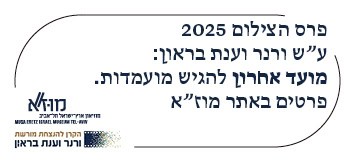

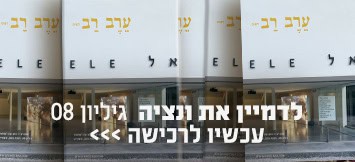

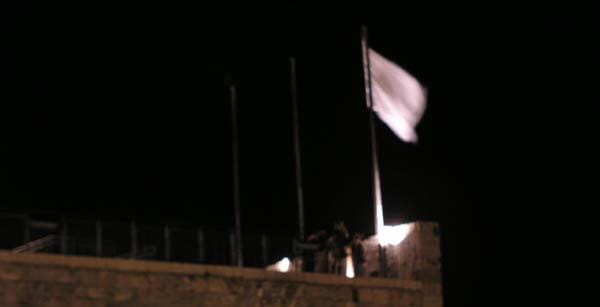
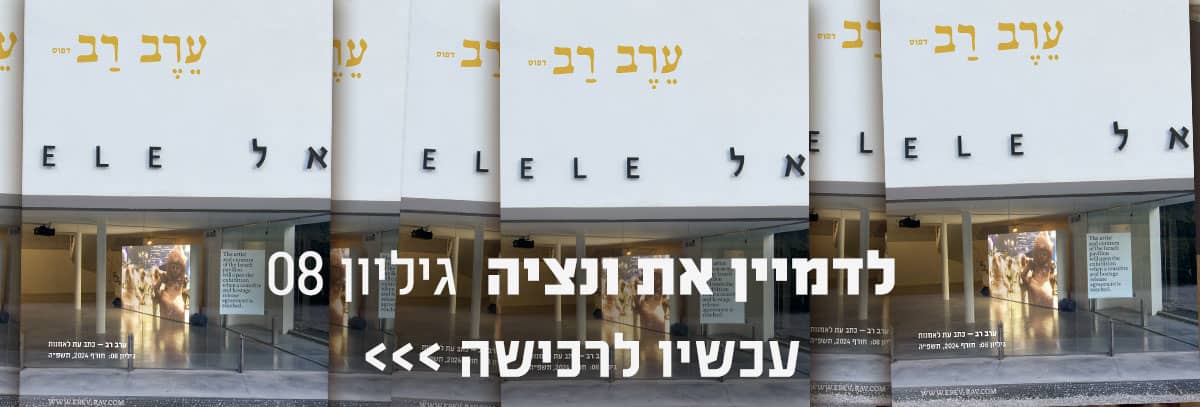
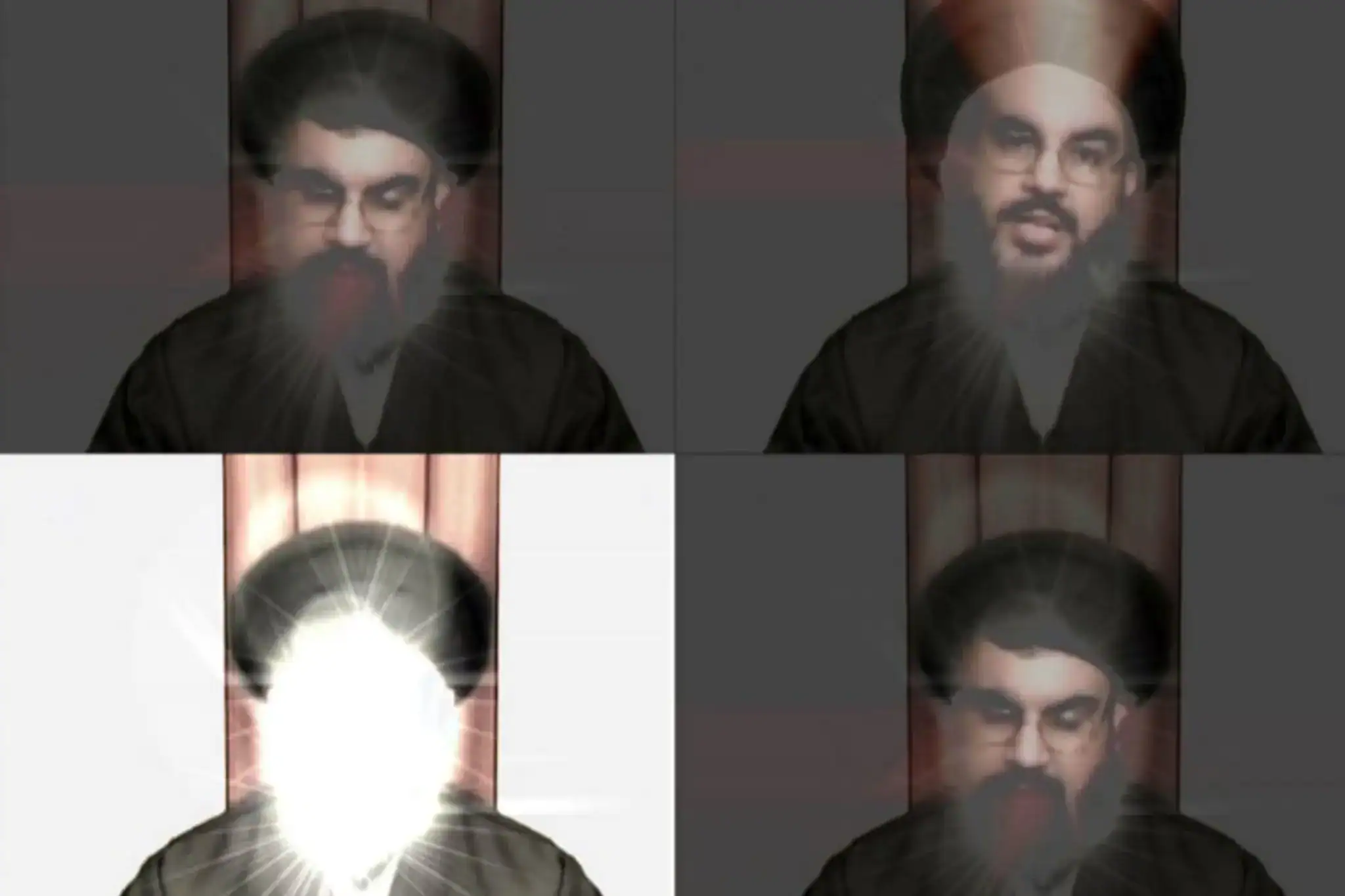 סוכנות קריאטיב אוסטרליה (Creative Australia), הגוף הממשלתי האחראי למימון האמנות במדינה, הודיעה כי האמן חאלד סבסאבי, שגדל בלבנון, והאוצר מייקל דאג’וסטינו ישובו להוביל את הביתן האוסטרלי בביאנלה לאמנות בוונציה בשנת 2026. ההחלטה באה לאחר הדחתם בפברואר בעקבות לחץ פוליטי, בשל עבודות קודמות של סבסאבי שעוררו סערה, בהן סרטון הכולל נאום של מזכ"ל חזבאללה לשעבר, חסן נסראללה. הסרט הוביל להאשמה בסנאט האוסטרלי כי מדובר ב"עידוד לטרור", על רקע מתיחות פוליטית גוברת ואקלים אנטישמי במדינה.
סוכנות קריאטיב אוסטרליה (Creative Australia), הגוף הממשלתי האחראי למימון האמנות במדינה, הודיעה כי האמן חאלד סבסאבי, שגדל בלבנון, והאוצר מייקל דאג’וסטינו ישובו להוביל את הביתן האוסטרלי בביאנלה לאמנות בוונציה בשנת 2026. ההחלטה באה לאחר הדחתם בפברואר בעקבות לחץ פוליטי, בשל עבודות קודמות של סבסאבי שעוררו סערה, בהן סרטון הכולל נאום של מזכ"ל חזבאללה לשעבר, חסן נסראללה. הסרט הוביל להאשמה בסנאט האוסטרלי כי מדובר ב"עידוד לטרור", על רקע מתיחות פוליטית גוברת ואקלים אנטישמי במדינה. 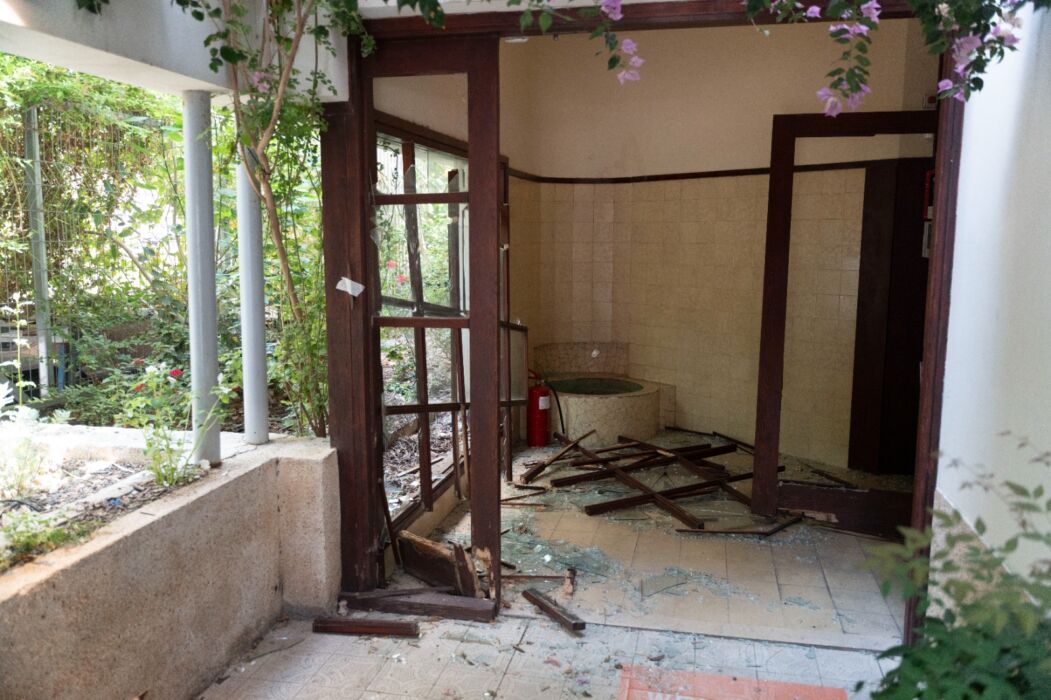 חמישה מבנים היסטוריים לשימור בכיכר ביאליק - מוזיאון העיר, בית ביאליק, בית ליבלינג, פליציה ובית ראובן - נפגעו כתוצאה מהדף פיצוץ הטיל שנפל במרכז תל אביב. הנזקים כוללים דלתות מקוריות שנעקרו, חלונות שנופצו ותריסים שנהרסו. בבית ביאליק נפגעה גם יצירת אמנות מרכזית של חיים ליפשיץ מהעשרים של המאה הקודמת, המתעדת את ביאליק ורבניצקי בעבודתם על ספר האגדה.
חמישה מבנים היסטוריים לשימור בכיכר ביאליק - מוזיאון העיר, בית ביאליק, בית ליבלינג, פליציה ובית ראובן - נפגעו כתוצאה מהדף פיצוץ הטיל שנפל במרכז תל אביב. הנזקים כוללים דלתות מקוריות שנעקרו, חלונות שנופצו ותריסים שנהרסו. בבית ביאליק נפגעה גם יצירת אמנות מרכזית של חיים ליפשיץ מהעשרים של המאה הקודמת, המתעדת את ביאליק ורבניצקי בעבודתם על ספר האגדה. 